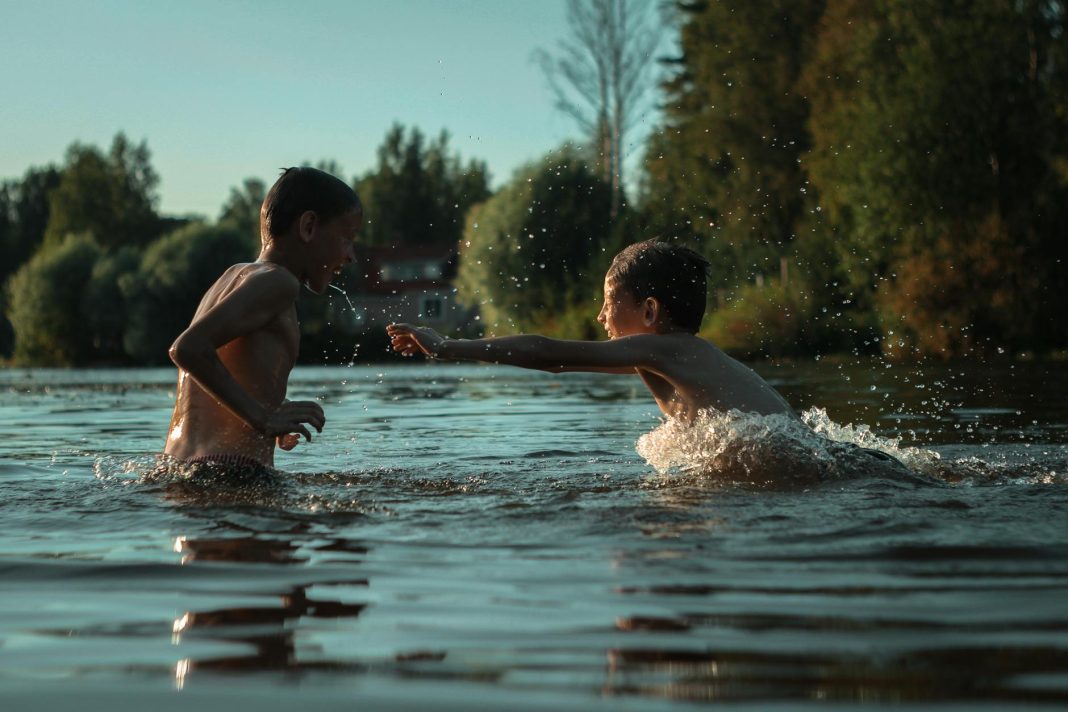Soyons honnêtes, être parent est un véritable parcours du combattant. Un instant, vous vous prélassez dans d'adorables câlins, l'instant d'après, vous luttez contre un bambin pour des brocolis ou vous jouez les médiateurs dans une querelle de frères et sœurs qui ressemble étrangement à une reconstitution de la Troisième Guerre mondiale. La discipline et les limites sont souvent perçues comme l'ennemi - des règles strictes qui étouffent le plaisir - mais ce sont en fait les héros méconnus d'une famille heureuse et fonctionnelle. Considérez-les comme le cadre solide qui maintient ensemble le magnifique chef-d'œuvre désordonné de votre famille.
Pourquoi les limites sont importantes (et ne le sont pas)
Les limites ne sont pas une question de contrôle, mais de respect - respect de vos enfants, de votre partenaire et de vous-même. Ce sont les lignes invisibles qui définissent ce qui constitue un comportement acceptable au sein de votre famille. Lorsque les limites sont claires, tout le monde se sent plus en sécurité. Les enfants s'épanouissent en sachant ce qui est attendu et ce qui ne l'est pas. Il s'agit moins de punir que d'éviter le chaos et de protéger le bien-être émotionnel.
Fixer des limites respectueuses ne signifie pas être un dictateur. Il s'agit d'une communication réfléchie et d'une application cohérente. Envisagez les stratégies suivantes :
- Impliquez vos enfants : Ne vous contentez pas de leur *dire* les règles, *discutez-en*. Demandez-leur leur avis (en fonction de leur âge, bien sûr). Cela favorise l'adhésion et l'appropriation.
- Restez simple et positif : Concentrez-vous sur ce qui devrait se passer plutôt que sur ce qui ne devrait pas se passer. Au lieu de "Ne frappe pas ton frère", essayez "Aie des mains gentilles".
- Soyez cohérent : C'est un point crucial. Une application incohérente envoie des messages contradictoires et enseigne aux enfants que les règles sont flexibles.
- Choisissez vos batailles : Toute infraction mineure ne nécessite pas forcément une intervention massive. Choisissez judicieusement les collines sur lesquelles vous voulez mourir.
- Offrir des choix : Le fait de donner aux enfants des choix dans des limites bien définies les responsabilise et réduit leur résistance. "Veux-tu porter la chemise bleue ou la chemise rouge ?" au lieu de "Porte la chemise bleue !".
- Expliquez pourquoi : Relier les règles à leurs conséquences et aux raisons qui les sous-tendent. "Nous ne crions pas à l'intérieur parce que cela fait mal aux oreilles des gens et les effraie.
Discipline positive : Au-delà de la punition
La discipline positive met l'accent sur l'enseignement et l'orientation plutôt que sur la punition. Il s'agit de comprendre le "pourquoi" du comportement d'un enfant, de s'attaquer à la cause profonde et de l'aider à apprendre de meilleures façons de faire face à la situation. Il s'agit moins de "l'arrêter" que de "l'aider à grandir". La feuille de route de la famille : Naviguer sur les routes sinueuses de la vie avec des limites et de la discipline
Voici quelques techniques efficaces de discipline positive :
- Conséquences naturelles : Laissez les enfants expérimenter les conséquences de leurs actes (si c'est sûr et approprié). S'ils ne rangent pas leurs jouets, ils risquent de ne pas pouvoir les retrouver plus tard.
- Conséquences logiques : Il s'agit de conséquences directement liées au mauvais comportement. S'il casse un jouet, il devra peut-être aider à gagner de l'argent pour le remplacer.
- Des temps d'arrêt, pas des temps morts : Les "time-ins" consistent en un espace calme où l'enfant peut se calmer et se connecter avec un parent, au lieu de l'isoler.
- Empathie et compréhension : Reconnaissez les sentiments de votre enfant même si vous n'approuvez pas son comportement. "Je sais que tu es frustré, mais frapper n'est pas acceptable.
- Renforcement positif : Prenez vos enfants en flagrant délit de bonté ! Félicitez et récompensez les comportements positifs plus que les comportements négatifs.
- Réunions de famille : Des réunions de famille régulières offrent un espace sûr pour discuter des préoccupations, conclure des accords et résoudre les conflits.
Guidance comportementale : L'art de la prévention
La meilleure discipline est souvent proactive et vise à prévenir les problèmes avant qu'ils ne surviennent. Il s'agit de comprendre les besoins et les déclencheurs de votre enfant et de créer un environnement qui favorise un comportement positif.
- Routine et structure : Des routines prévisibles aident les enfants à se sentir en sécurité et à réduire leur anxiété, ce qui peut se traduire par un meilleur comportement.
- Un sommeil et une alimentation adéquats : Un enfant fatigué et affamé est un enfant plus difficile.
- Une attention suffisante : Donnez à vos enfants beaucoup d'attention positive afin qu'ils ne la recherchent pas par des comportements négatifs.
- Enseigner la régulation émotionnelle : Aidez les enfants à identifier et à exprimer leurs émotions de manière saine.
- Donnez l'exemple d'un bon comportement : Les enfants apprennent en observant, alors assurez-vous de modéliser les comportements que vous voulez voir chez eux.
N'oubliez pas la vue d'ensemble
Être parent n'est pas chose facile. Il y aura des jours où vous aurez l'impression d'échouer lamentablement. Mais n'oubliez pas qu'il s'agit d'un voyage, pas d'une course. Soyez patient avec vous-même et avec vos enfants. Concentrez-vous sur la construction d'une relation forte et aimante basée sur le respect mutuel, la compréhension et une communication claire. La discipline et les limites ne sont pas une question de contrôle, mais de création d'un environnement sûr et favorable où vos enfants peuvent s'épanouir et devenir des personnes heureuses et responsables.
Il ne s'agit pas de perfection, mais de progrès. Célébrez les petites victoires, apprenez de vos erreurs et n'oubliez pas que votre famille est un système dynamique en constante évolution. Acceptez le chaos, trouvez l'humour et continuez à travailler pour que votre vie de famille soit plus harmonieuse et plus heureuse.

